Water in Hawaii volcano could trigger explosive eruptions
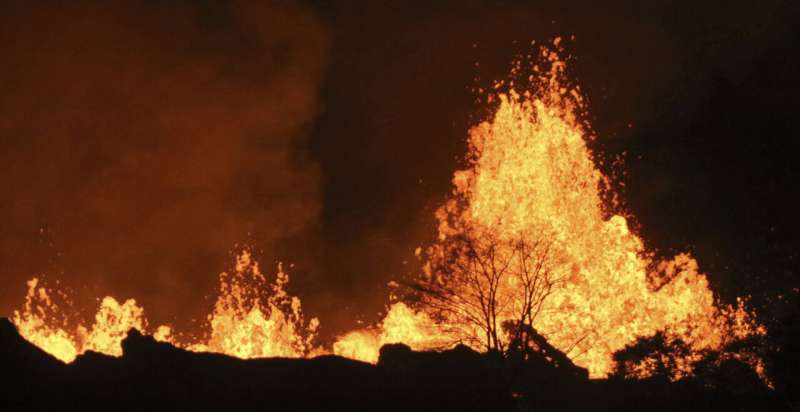
For the first time in recorded history, a pond of water has been discovered inside the summit crater of Hawaii's Kilauea volcano, a development that could signal a shift to a more explosive phase of future eruptions.
After a week of questions about a mysterious green patch at the bottom of the volcano's Halemaumau crater, the former home of a famed lava lake, researchers confirmed the presence of water on Thursday, officials with the U.S. Geological Survey told The Associated Press on Friday.
"The question is what does this mean in the evolution of the volcano?" USGS scientist emeritus Don Swanson said.
Halemaumau has never had water since written observations began, he said, so the pond is unusual.
Scientists aren't exactly certain what will happen next, but when lava interacts with water it can cause explosive eruptions.
One possibility is that lava could slowly heat up the groundwater and eventually create a new lava lake, Swanson said. Lava could also interact with the water table and create small explosions.
"The other possibility is that magma rises rapidly," Swanson said. "That could produce a larger explosion."
USGS officials stressed that there is currently "no reason to think hazards at the summit have increased or decreased" because of the discovery of water.
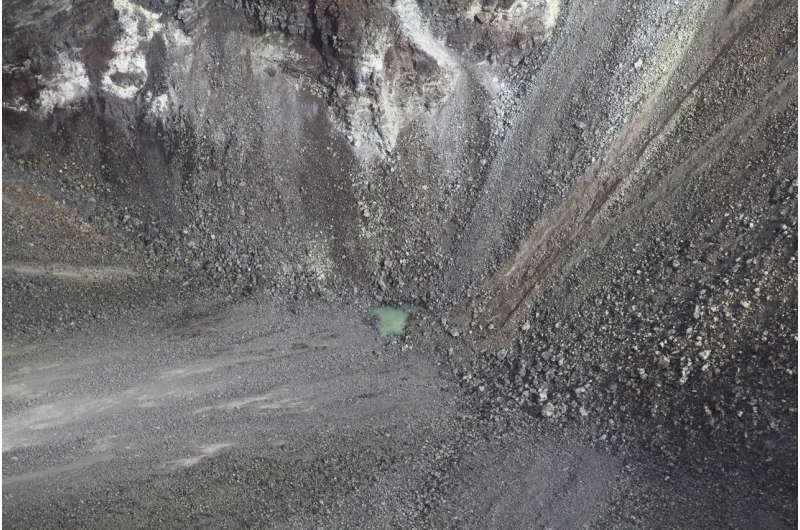
But Swanson said in June that the presence of water could be a significant switch in the long-term activity of the volcano.
Kilauea has a history of alternating between long periods of explosive eruptions and times of slower, so-called effusive phases.
Explosive periods are exactly what they sound like, centuries of massive explosions that send hot debris racing down the hillsides and towering columns of rock and ash high into the atmosphere.
Effusive periods, which Kilauea has been in for about 200 years, are marked by slower, steady lava flows that—in comparison—trickle out of the ground.
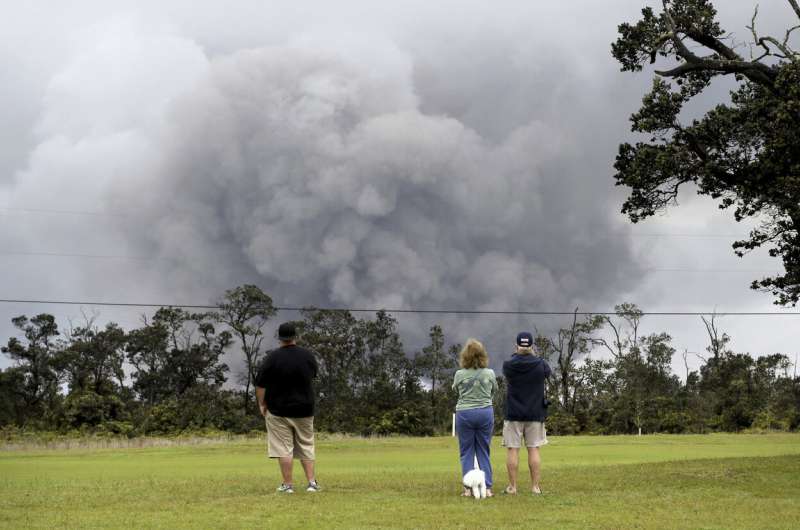
The next explosive period, researchers believe, will be preceded by a massive collapse of Kilauea's caldera floor.
An eruption that was ongoing for more than 30 years came to a dramatic end last year when lava exploded from Kilauea's flank and covered a huge swath of land, destroying hundreds of homes in one of the largest eruptions in recent history.
That eruption came with a significant drop of the caldera floor. Halemaumau crater collapsed nearly 2,000 feet (600 meters) over the course of several months, but Swanson said he would expect a larger, "sort of wholesale collapse of the caldera floor" to trigger a prolonged explosive period.
"If it really is a transition then there will have to be repeated collapses, ever-deepening the caldera floor, before we would get into one of these larger scale events," Swanson said.
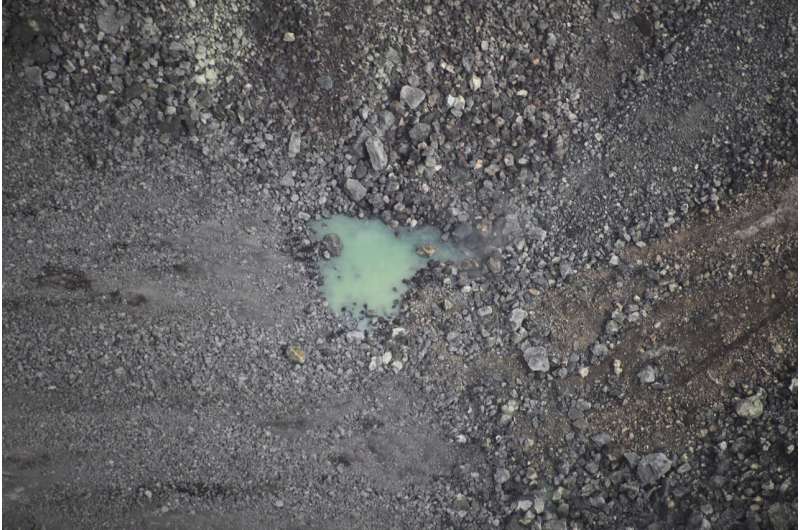
Swanson said that while researchers have never observed water on the caldera floor before, there are Native Hawaiian chants that describe the presence of ponds appearing just before explosive events.
"It's really not scientific evidence but it nonetheless enhances the interpretation," Swanson said.
Researchers have data going back about 2,500 years that shows this transition between explosive and effusive stages.
"We know from mapping the deposits and studying them that there have been several of those (explosive) events between about 1,500 and 1,790 and several events between about 200 B.C. and 1,000 A.D.," Swanson said. "Kilauea is the only volcano for which we've recognized these cycles so far and I think that's because it's been so intensively studied."
-
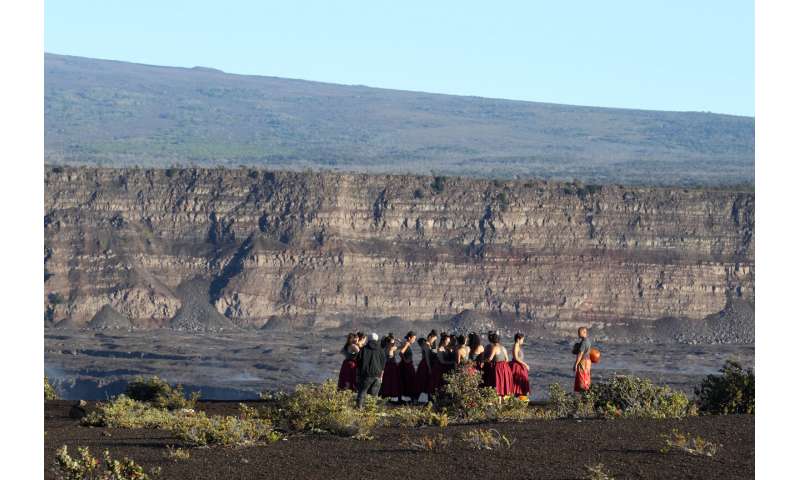
In this April 25, 2019 photo, a group of Native Hawaiians stand next to the collapsed caldera floor of Kilauea volcano in Hawaii Volcanoes National Park on the Big Island. A small pond of water has been discovered inside the summit crater of Hawaii's Kilauea volcano for the first time in recorded history, possibly signaling a shift to a more explosive phase of future eruptions. The United States Geological Survey says that after a week of questions about a green patch inside Kilauea's Halemaumau crater, researchers were able to confirm the presence of water on Thursday, Aug. 1. (AP Photo/Caleb Jones, File) -
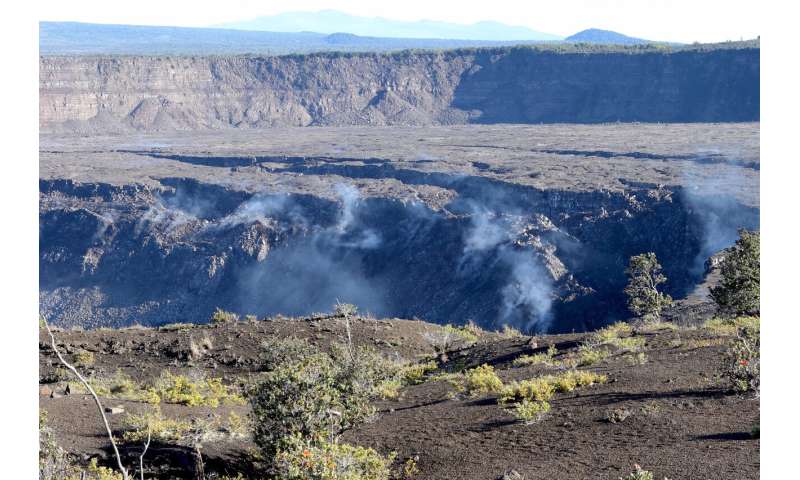
In this April 25, 2019 photo, gas rises from the collapsed caldera floor of Kilauea volcano in Hawaii Volcanoes National Park on the Big Island. A small pond of water has been discovered inside the summit crater of Hawaii's Kilauea volcano for the first time in recorded history, possibly signaling a shift to a more explosive phase of future eruptions. The United States Geological Survey says that after a week of questions about a green patch inside Kilauea's Halemaumau crater, researchers were able to confirm the presence of water on Thursday, Aug. 1. (AP Photo/Caleb Jones, File) -
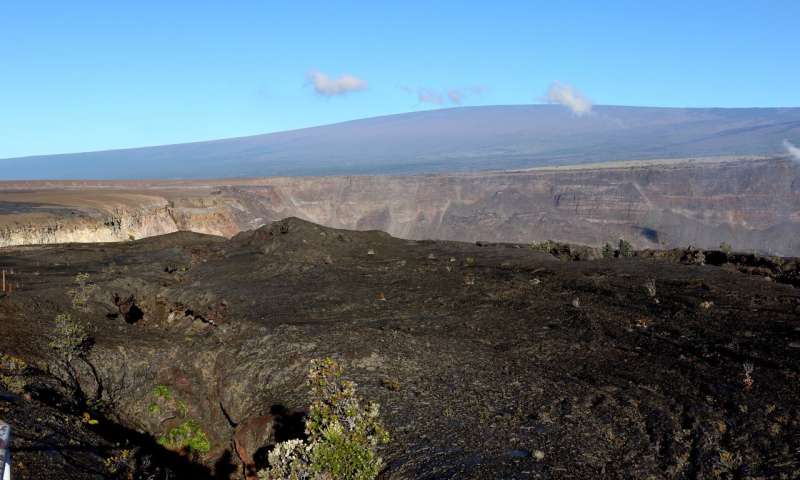
In this April 25, 2019 file photo, the collapsed caldera floor and Halemaumau crater are shown on Kilauea volcano in Hawaii Volcanoes National Park on the Big Island. A small pond of water has been discovered inside the summit crater of Hawaii's Kilauea volcano for the first time in recorded history, possibly signaling a shift to a more explosive phase of future eruptions. The United States Geological Survey says that after a week of questions about a green patch inside Kilauea's Halemaumau crater, researchers were able to confirm the presence of water on Thursday, Aug. 1. (AP Photo/Caleb Jones, File)
These long periods are marked by large explosions that occur every few decades—or even centuries—with smaller explosions in between, Swanson said. And while explosive eruptions don't normally feature fast-moving lava flows or massive fountains of molten rock, they are still very dangerous.
Swanson said big explosive eruptions commonly produce pyroclastic surges—walls of hot air, ash and rock. In 1790 one such eruption killed a large number of people at Kilauea's caldera, Swanson said.
"These surges can move at hurricane velocity across the landscape and they are among the most dangerous kinds of eruptions," he said.
Swanson said none of this will happen overnight, and he hopes that modern monitoring techniques will give the public plenty of warning.
"I've been stressing that the current activity at Kilauea, or lack thereof, can go either way," Swanson said. "We can either return to what was going on before, or this could be the preamble to some more significant change in the volcano that leads to explosive activity."
© 2019 The Associated Press. All rights reserved.


















